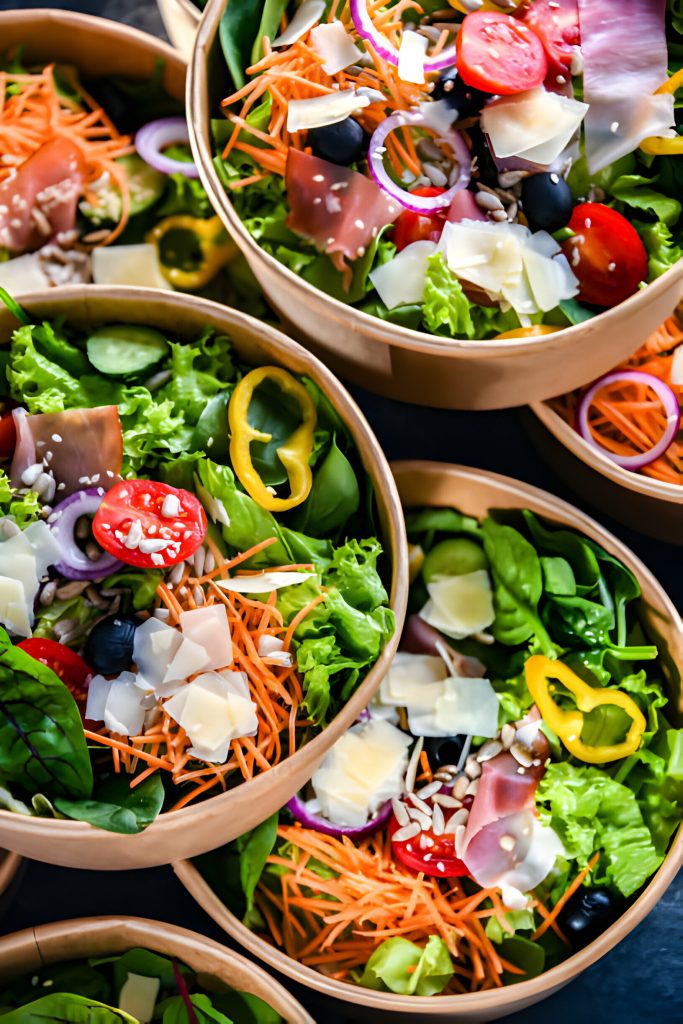How to Increase Restaurant Sales? Best 20 Tips for Real Life

Increase Restaurant Sales
In the competitive landscape of the restaurant industry, achieving higher sales isn’t merely about serving great food. It’s about mastering a myriad of factors that collectively enhance the dining experience and attract more patrons. From ambiance to customer service and marketing strategies, here are ten crucial elements essential for maximizing sales in the restaurant business.
1. Stellar Customer Service
Customer service is the cornerstone of any successful restaurant. From the moment a guest walks in until they leave, every interaction counts. Prompt and friendly service can turn a first-time visitor into a loyal customer and encourage them to return.
2. High-Quality Food
While it may seem obvious, offering high-quality, flavorful food is paramount. Consistency in taste, freshness of ingredients, and presentation all contribute to a memorable dining experience, prompting customers to return and recommend your establishment to others.
3. Appealing Ambiance
Creating an inviting ambiance sets the stage for an enjoyable meal. Factors such as lighting, decor, and music can significantly influence how customers perceive their dining experience. A well-designed space that complements the cuisine can enhance satisfaction and increase sales.
4. Strategic Menu Design
Crafting a menu that balances variety, pricing, and seasonal offerings is crucial. Highlighting signature dishes, incorporating enticing descriptions, and utilizing strategic placement can steer customers towards high-profit items and drive sales.
5. Effective Marketing
Utilizing various marketing channels, including social media, email newsletters, and local advertising, helps attract new customers and retain existing ones. Engaging promotions, special events, and loyalty programs can incentivize visits and boost sales.
6. Seamless Online Presence
In today’s digital age, a strong online presence is essential. A user-friendly website, active social media profiles, and online ordering platforms streamline the customer experience, making it easier for patrons to find and engage with your restaurant.
7. Efficient Operations
Efficiency in restaurant operations not only enhances customer satisfaction but also improves the bottom line. Streamlining processes, optimizing staffing levels, and investing in technology solutions such as point-of-sale systems can increase productivity and sales.
8. Engaging Staff
Well-trained and motivated staff can make a significant impact on sales. Encouraging upselling, providing product knowledge training, and fostering a positive work environment can lead to increased revenue and improved customer satisfaction.
9. Focus on Customer Feedback
Listening to customer feedback is invaluable for identifying areas of improvement and addressing concerns promptly. Implementing feedback mechanisms such as surveys or comment cards demonstrates a commitment to customer satisfaction and fosters loyalty.
10. Adaptability and Innovation
The restaurant industry is constantly evolving, and successful establishments must adapt to changing trends and consumer preferences. Embracing innovation, experimenting with new menu items, and staying ahead of industry developments can help maintain a competitive edge and drive sales growth.
11. Community Engagement
Building strong ties with the local community can be a powerful driver of sales. Hosting events, partnering with local businesses, and sponsoring community initiatives not only raise awareness but also foster a sense of belonging among residents, leading to increased patronage and support.
12. Embrace Sustainability
Consumers are increasingly conscious of environmental issues, and restaurants that prioritize sustainability often resonate with eco-conscious diners. Implementing sustainable practices such as sourcing local ingredients, reducing food waste, and using eco-friendly packaging not only appeals to a growing market segment but also aligns with ethical values, attracting more customers and enhancing sales.
13. Offer Catering and Delivery Services
Expanding services beyond the traditional dine-in experience can open up new revenue streams. Offering catering services for events and parties allows restaurants to tap into additional markets, while providing delivery options satisfies the demand for convenience-driven dining experiences, ultimately driving sales and expanding the customer base.
14. Leverage Data Analytics
Harnessing the power of data analytics can provide valuable insights into customer behavior, preferences, and trends. By analyzing sales data, customer feedback, and market trends, restaurants can make informed decisions regarding menu offerings, pricing strategies, and marketing campaigns, optimizing operations and driving sales growth.
15. Invest in Training and Development
Continuous training and development for staff members are essential for maintaining high standards of service and product quality. Investing in employee education, skills development, and leadership training not only improves performance but also boosts morale, resulting in better customer experiences and increased sales.
16. Create Memorable Experiences
In addition to serving delicious food, creating memorable experiences for guests can leave a lasting impression and encourage repeat business. Whether through unique dining events, personalized service, or special touches like birthday surprises, going the extra mile to exceed customer expectations can differentiate your restaurant and drive sales through positive word-of-mouth and repeat visits.
17. Monitor and Respond to Reviews
Online reviews and ratings play a significant role in shaping consumer perceptions and influencing dining decisions. Monitoring review platforms and promptly responding to feedback, whether positive or negative, demonstrates attentiveness and a commitment to customer satisfaction, building trust and loyalty that translates into increased sales and positive brand reputation.
18. Stay Competitive with Pricing Strategies
In a competitive market, pricing plays a critical role in attracting customers and maximizing sales. Employing dynamic pricing strategies, offering value-driven promotions, and periodically evaluating menu pricing based on cost fluctuations and market trends can help restaurants stay competitive while maximizing profitability and driving sales volume.
19. Foster a Culture of Excellence
Creating a culture of excellence where every team member is committed to delivering exceptional service and quality sets the foundation for long-term success. By instilling pride, accountability, and a shared commitment to excellence, restaurants can consistently meet and exceed customer expectations, resulting in increased sales, customer loyalty, and positive brand reputation.
20. Continuously Evolve and Innovate
Finally, successful restaurants must embrace a mindset of continuous evolution and innovation to stay relevant in a rapidly changing industry. Whether through menu innovations, operational enhancements, or embracing emerging technologies, staying ahead of the curve and consistently offering fresh, exciting experiences keeps customers engaged, drives repeat business, and ultimately leads to sustained sales growth.


First You Decide Where To Place The Restaurant?
When it comes to setting up a restaurant, one of the most crucial decisions you will make is choosing the right location. The location of your restaurant can significantly impact its success and profitability. Here are some key factors to consider when selecting a location for your restaurant:
- Demographics: Consider the demographic of the area where you plan to open your restaurant. Are there enough potential customers in the vicinity to support your business? Make sure the demographics align with your target market.
- Foot Traffic: Choose a location with high foot traffic to increase the chances of attracting walk-in customers. Busy streets, shopping malls, and business districts are great options for maximizing exposure to potential diners.
- Competitors: Research the competition in the area before deciding on a location. It’s essential to strike a balance between being close enough to other restaurants to benefit from their customers but not too close that you are in direct competition.
- Accessibility: Ensure that your restaurant is easily accessible to customers. Choose a location with ample parking space, easy public transportation access, and visibility from the main road to make it convenient for diners to visit.
- Community: Consider the local community and their dining preferences when selecting a location. Are there any cultural or lifestyle factors that could influence the success of your restaurant in that area?
Consider the Right Location before Setting Up the Restaurant:
Selecting the right location for your restaurant is a crucial step that can have a significant impact on your sales and overall success. By carefully considering factors such as demographics, foot traffic, competitors, accessibility, and the local community, you can strategically position your restaurant for maximum profitability.
Optimizing Your Website for Local SEO
One of the most effective strategies for increasing restaurant sales is to focus on local SEO. By targeting local keywords and optimizing your website for local search queries, you can attract customers in your area who are actively searching for a place to eat. Make sure to include your restaurant’s name, address, and phone number on every page of your website, and create a Google My Business profile to improve your local search rankings.
Creating High-Quality Content
In addition to optimizing your website for search engines, it is important to create high-quality content that will engage and inform your audience. Consider adding a blog to your website where you can share recipes, cooking tips, and other relevant content. By providing valuable information to your readers, you can establish yourself as an authority in the industry and attract more visitors to your website.
Using Social Media to Drive Traffic
Social media is a powerful way for promoting your restaurant and driving traffic to your website. By sharing mouth-watering photos of your dishes, engaging with your followers, and running targeted ads, you can increase brand awareness and attract new customers. Make sure to include links to your website in your social media posts to encourage followers to visit your site and make a reservation.
Tracking Your Progress with Analytics
To ensure that your SEO efforts are paying off, it is important to track your progress using analytics tools. Monitor your website traffic, search engine rankings, and conversion rates to see how your SEO strategies are performing. By analyzing this data, you can identify areas for improvement and make adjustments to your SEO strategy as needed.
In summary, achieving sustained sales growth in the restaurant business requires a holistic approach that encompasses various elements, from outstanding customer service and high-quality offerings to strategic initiatives, innovation, and a commitment to excellence. By focusing on these key areas and continuously adapting to evolving consumer preferences and industry trends, restaurants can position themselves for long-term success and profitability in today’s competitive marketplace.
To know more about the Remote Work and Outsourcing in Business Click here
